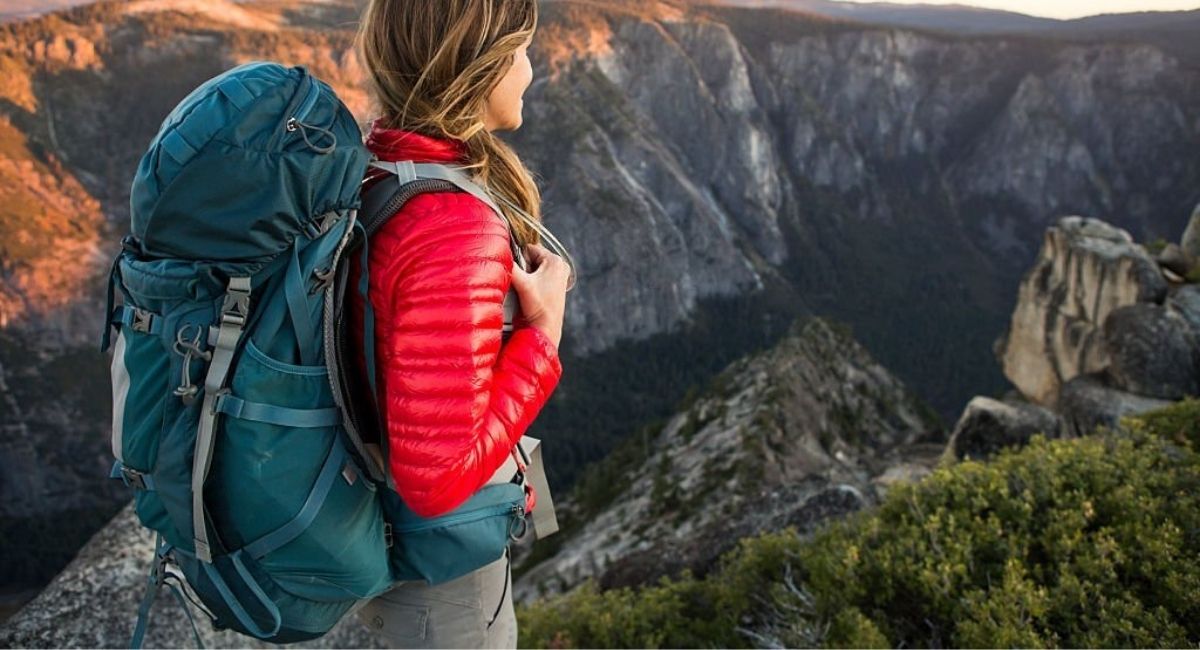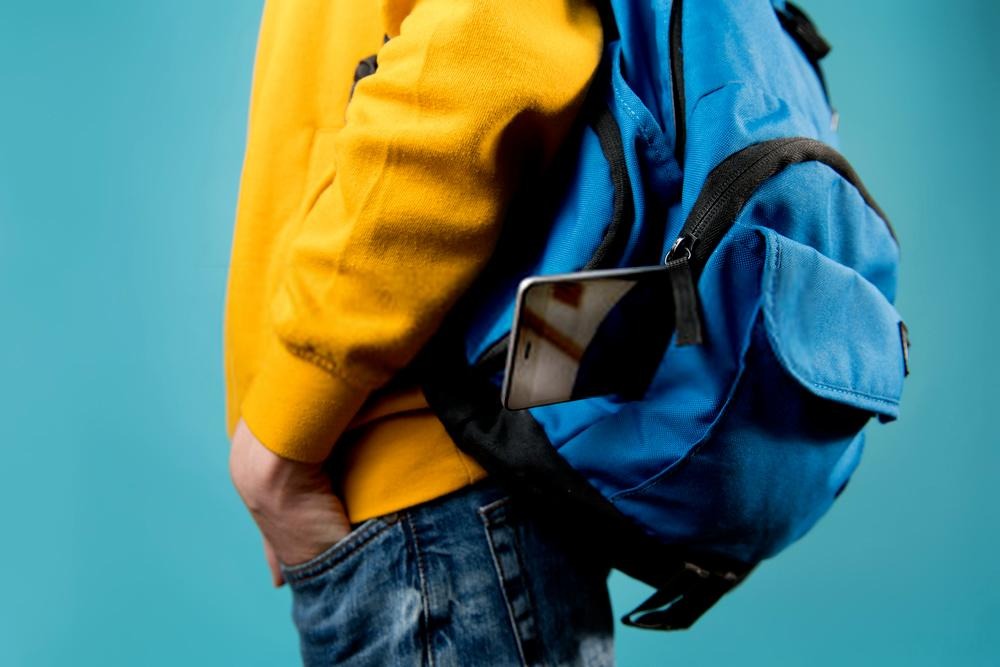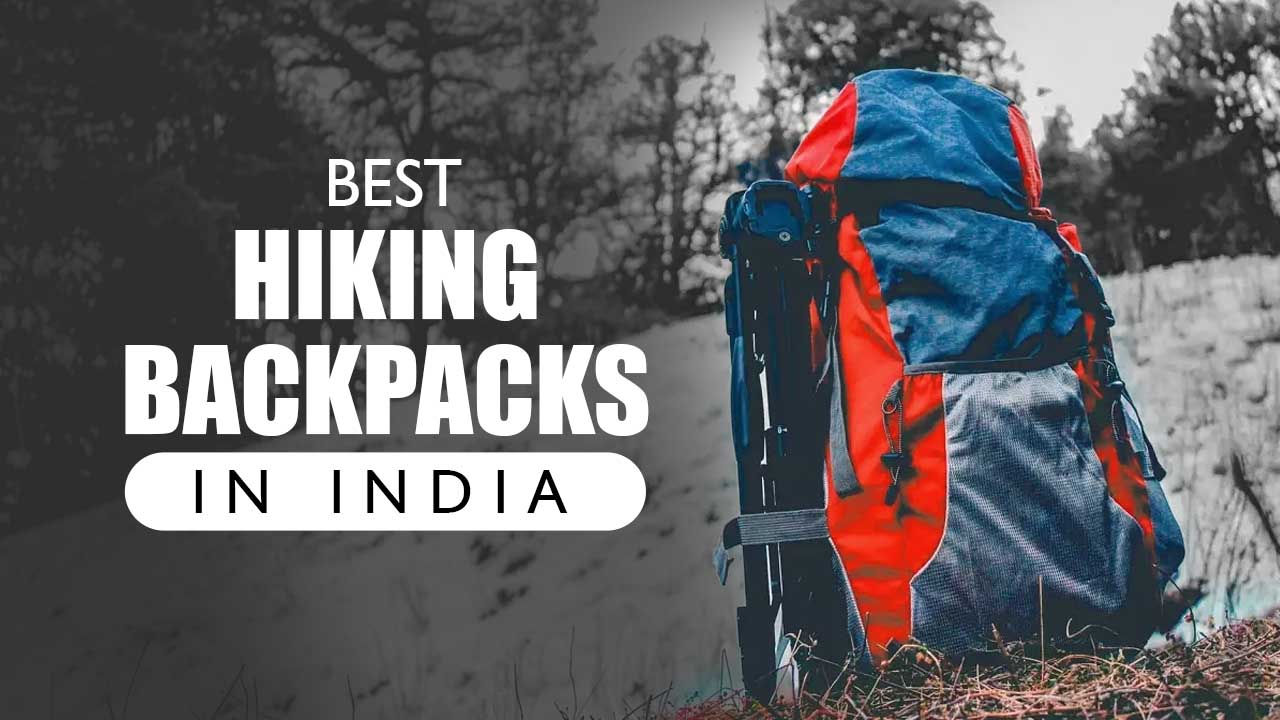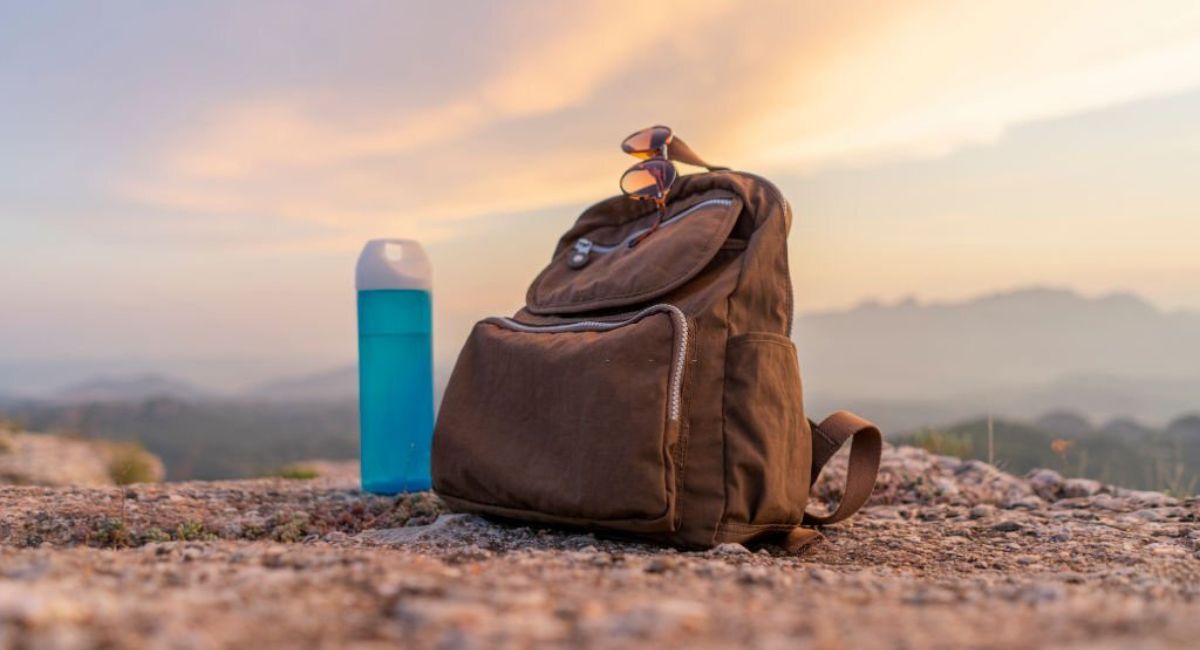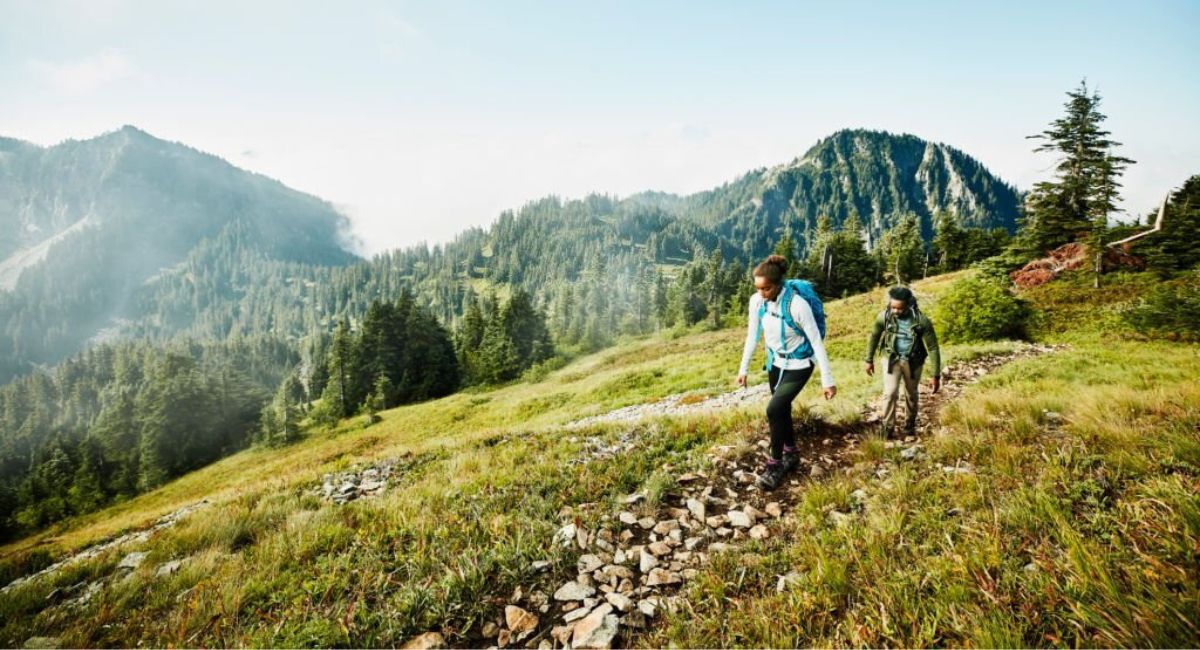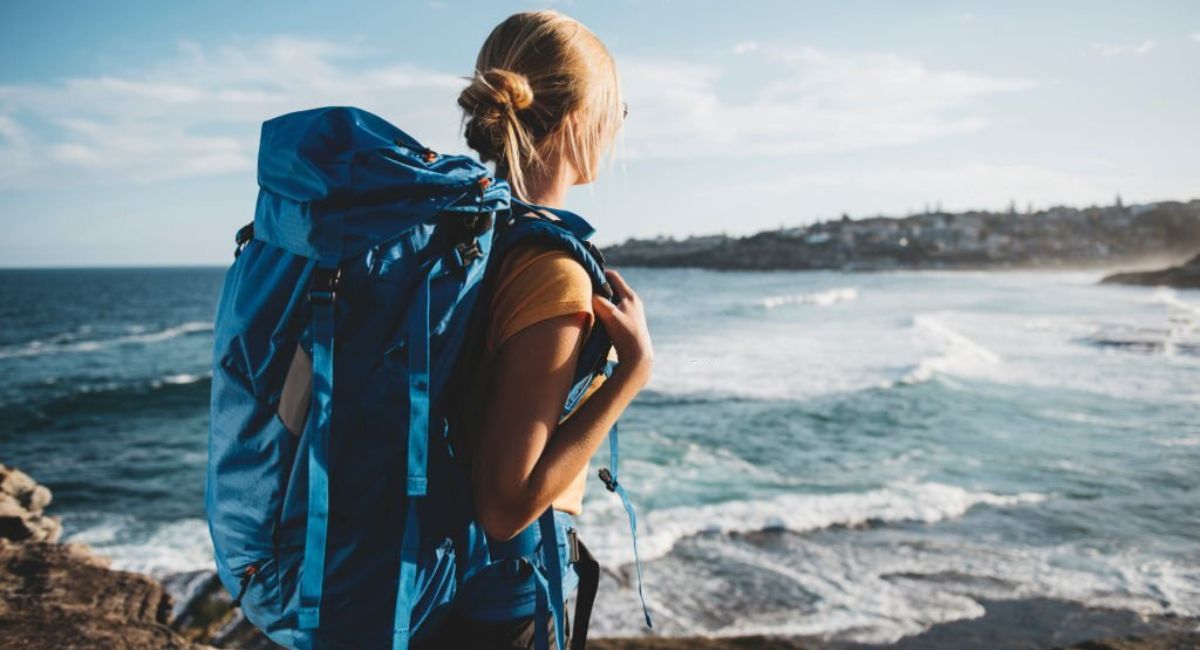The perfect hiker knows the route well and knows exactly what he needs to tackle the route. His backpack is a masterpiece of weight and space; every object he carries is indispensable; nothing is left to chance.
This is why trekking is a school of life, because it teaches you to do without what is superfluous and to carry during your journey only what you need to get to the end, to the destination.

In this article we will see the 21 trekking essentials to put in the backpack for trekking, you will read some curious articles such as straws one meter long or bottles full of water, as well as clothing and backpacks and the First Aid Kit.
The world of trekking has its own rules; even what may seem superfluous to the layman can even make the difference between life and death for the hiker.
Trekking Essentials
If you are an outdoor enthusiast, then trekking is likely one of your favorite activities. Trekking can provide an amazing physical and mental challenge, as well as an opportunity to see some truly beautiful landscapes. However, before you head out on your next trekking adventure, it’s important to make sure you are properly prepared. Below, we will discuss the essential items you need to bring with you on a trek. So, read on for tips on how to prepare for your next trekking trip!
- Clothes
- Airtight nylon bags
- Spare bottle of water
- Energy foods
- Backpack cover
- Flashlights
- Compass
- Map
- Camcorder or action camera
- Folding knife
- Lighter and matches
- One meter rubber straw
- First aid kit
- Sleeping bag
- Portable charger
- Portable water purifier
- Lanyard
- Hand sanitizer
- Sunscreen
- Sunglasses
- Trekking poles
1. Clothing to keep in the backpack
When trekking, you dress in layers, according to the classic “onion chain”: the reason is that the weather conditions can change from one moment to the next.
For this reason, it is good to carry some clothes in your backpack that can be useful during the journey.
It is useful to have trouser covers and a jacket cover in waterproof fabric, preferably in gore-tex. They don’t take up much space and can make a difference, especially if a day that was looking to be sunny suddenly turns rainy.
For this reason, especially when going to the mountains, in your backpack it is always good to bring a K-Way, that is a light waterproof jacket, which does not make you sweat.
During the trekking in the mountains, when there are important differences in height, you could suddenly feel cold due to the lowering of the temperature at high altitudes; a fleece or sweater can help.
In addition to the outermost clothing, especially if the route also includes an overnight stay in a shelter, you will have to think about a change of underwear, which will also be useful if the climb has caused a lot of sweating. The replacement avoids the danger of colds.
On the other hand, when the wind rises, you can wear a bandana: it warms the neck and protects it from gusts, avoiding sore throats that can ruin the excursion; the bandana is also useful if you feel cold in the head.
Winter trekking often contemplates the possibility of encountering snowy paths. The snow can also be quite deep, and the pants can get wet on the way.
Spare trousers to keep in your backpack will certainly be handy: you can opt for a model in breathable fabric; on the market there are those equipped with gaiters, to protect themselves from deep snow.
2. Airtight nylon bags
Previously we talked about the humidity to which one can be subjected during one’s itinerary. Snow, rain, streams, and transpiration are the order of the day for the hiker. In addition to spare clothing to keep in your backpack, a good rule of thumb is to have airtight nylon bags. They are used to store clothing, keeping spare clothing separate from used ones, often damp.
The bags are also used to keep some objects that humidity could deteriorate cell phones, topographic maps, flashlights, batteries, documents, and money.
If, on the other hand, a meal is eaten during the journey, waste may form that you may not know where to throw, in the absence of rubbish bins. The sealed nylon bags in this case will help the hiker to respect the environment.
The combination of airtight bags and a waterproof backpack allow you to be sure that your personal items will stay dry.
3. Spare bottle of water
Plenty of drinking is unavoidable when walking on the trekking route. A lot of fluids are lost which must be replenished immediately, to lower the body temperature.
In general, an experienced hiker knows the amount of water he will need to tackle a certain type of route: usually a one-litre bottle of water is enough for a day of walking on the snow. If, on the other hand, it is sunny, a one and a half litre bottle will suffice.
The hiker chooses foods that do not cause intense thirst during the itinerary; however it is not always possible to predict what will happen; an accident on the way, an accident can extend the journey by several hours; sometimes it may happen that you are forced to stay overnight in a shelter.
For this reason, expert trekkers recommend bringing with you a bottle of water or better a thermal bottle which the hiker should forget about: he will have to put it on the bottom of the backpack and use it only in extreme cases. need.
Carbonated, sweet and alcoholic drinks are not recommended, although one might think that the latter are useful when it is very cold.
4. Energy foods
In addition to drinking plenty of water, when hiking you need to eat properly. It is not recommended to bring with you dishes that can weigh down and make digestion difficult, even if the excursions are very tiring and can cause appetite.
Therefore, it is good to avoid sausages and prefer, if the journey is particularly long, sandwiches with chocolate or jam.
In the backpack, if the itinerary is shorter, chocolate or energy bars can be brought, even a container with dried fruit can be stored and used for immediate energy, in the event that a sugar drop is felt. They are foods that can be transported easily and are stored in a small space.
5. Backpack cover
The best trekking backpacks in India are usually waterproof, but this feature is not always enough to protect personal items from rain or a sudden storm; for this a backpack cover can be useful.
Most trekking backpacks have it supplied. if this is not the case, it is advisable to get it and carry it inside the backpack. It will help keep the equipment perfectly dry.
6. Flashlights
The trekking route to be tackled can last a few hours, sometimes a whole day. In winter it can happen to leave with the light and come back when the sun has set.
Even when the itinerary is intended to last only half a day, an unexpected event can occur, which forces the hiker to tackle a path in the absence of light.
For this reason, it is always better to keep at least a couple of flashlights inside the numerous external pockets of the backpack.
It is always better to have a spare one, it may happen that you lose one of the two or it may happen that due to prolonged use the battery runs out. Flashlights don’t weigh much and don’t take up too much space.
Some hikers also equip themselves with a headlamp, they are torches that are placed on the head and allow you to illuminate the path allowing the hands to remain free, in the event that you face particularly steep paths for which it may be useful to help yourself with both hands or with trekking poles.
7. Compass
Two items to always carry in your backpack are the compass and the altimeter.
They probably won’t always be needed, but there will be occasions when you will magically remember that they are in your backpack pockets, and it will be important to be able to use them.
The altimeter with GPS, above all, is indispensable for those who do not have a very strong sense of orientation. Especially novice beginners might get lost – having an altimeter will be very useful.
The compass is smaller and lighter and does not take up space. There is no need to buy precision ones: they are heavier and do not guarantee a better yield.
8. Map
One of the tips most often given to novice hikers is to study the itinerary before setting out on the trail.
However, even the most experienced trekkers, despite knowing the route well, never forget the topographic map at home. It is always present in the external pocket of the backpack, ready to be used when unexpected events occur, and you are forced to change your itinerary.
The topographic map is especially useful on mountain trails because it also marks the differences in height and indicates at what time it will be dark.
There are two versions: the paper version and the digital one. The advice is to bring both, because you can find yourself in areas where the GPS does not work, or it can happen that the smartphone battery runs out.
The paper map can be used in any area, even hundreds of meters high and does not “run out”. The advice is to keep it in a plastic case, so that it does not get wet.
9. Camcorders or action cameras to film or photograph your adventures
Trekkers often bring an action camera with them on the way; they bear a few pounds more inside the backpack to capture unexpected landscapes or events that would otherwise remain the subject of an oral story, here are the models that we recommend in this article dedicated to Action Cams.
Everyone is free to tell in their own way, but the action cam can be a useful tool to describe step by step the emotions felt during an excursion; however, don’t forget to bring the spare battery.
Especially during the winter, in snowy landscapes, a video camera can capture breath-taking scenery. Some action cameras even withstand temperatures of – 30 degrees.
In the same way it could be interesting to document an excursion during a storm or the crossing of a particularly challenging watercourse: a water-resistant action camera will be perfect, in this case you must not forget to bring the case, the waterproof case that waterproofs it.
Some hikers like to always be connected and social: a smartphone allows you to publish video material relating to the excursion in real time.
10. Folding knife
One tool that can be useful and, in some cases, lifesaving is the switchblade, although a Swiss army knife can also work.
The jack saw instead is used to cut wood in case you want to light a fire to warm up. Usually, it is not recommended to light a fire on the trekking path, especially if you are in the middle of the vegetation, but in some emergency cases, if it is very cold and you are stuck due to an unexpected event, it is essential to light a small bonfire and feed it.
The multifunctional Swiss army knife is the most recommended because it is also equipped with a hacksaw.
11. Lighter and matches for the fire
It was previously written that lighting a fire may be necessary, in an emergency, to defend yourself from the cold or even to communicate your presence to the rescue.
In any case, it is always advisable to use fire in situations of great need.
However, not everyone is able to do it: to feed the flame it takes a certain expertise, which only the most expert hikers possess; beginners may find themselves in difficulty, so better not risk it: in the backpack there will be a lighter and matches.
The advice is to bring both because the lighter, below a certain temperature, may not work. Both the matches and the lighter must be kept in the sealed nylon bag, so that they do not get wet.
A Swiss army knife will be used to cut the branches, a lighter or a match will have to light the fire; however, since it is not always an easy operation, it is better to also carry fire-lighter blocks in your backpack to store in a waterproof container.
12. One meter rubber straw
It might seem like a useless or bizarre object, but the one-meter-long rubber straw is one of those objects that you do not regret having brought with you, especially in difficult situations, when the supply of water is finished.
The straw is used to drink the water deposited in gorges that cannot be reached in any other way. Some hikers guarantee that they would never do without it.
If it is a question of having to drink when you are thirsty, even such an unusual object becomes part of the trekking crew by right.
13. First aid kit
It is perhaps the most important element of the hiker’s equipment, along with the water reserves. The medical kit must always be present in the backpack because it allows you to face the excursion in absolute serenity.
Inside there must be disinfectant, plasters, bandages to bandage the wounds, creams against burns, antiseptic lotions, a drug against nausea and headache and medicines that lower the body temperature in case of fever.
It is not said that you must buy a ready-made kit; it is always possible to create your own first aid kit, according to your needs. Those allergic to insect bites, for example, could bring an antidote to wasp or hornet venom.
14. Sleeping bag
Mountain trekking is often characterized by staying overnight in mountain huts. Inside, trekkers usually find mattresses to sleep in; the advice is to bring with you, inside the backpack, a sleeping bag: it helps to maintain a good level of hygiene.
The mattresses are sure to be clean, but there are always exceptions, especially if the shelters have not been visited in some time.
To avoid encountering bedbugs and not to have unpleasant surprises, you can use this accessory: it does not take up much space and costs little.
15. Portable charger
Inside the refuge, in addition to refreshing oneself, changing clothes and resting, it will be necessary to recharge the batteries of the telephone and other devices useful for the hiker.
The power bank is a tool that allows you to recharge any portable device: not only mobile phones but also video cameras and mp3 players in case you want to listen to music during the trek.
The power bank also charges GPS watches and tablets. These devices allow you to have energy reserves even in case of extreme need. On the market there are several models, of different sizes and weights.
16. Portable water purifier
Here is another tool that not everyone knows but which is very useful to the hiker. The water purifier is a small tool that allows you to purify any type of water, even the most polluted. It is an accessory to be used in cases where you find yourself unexpectedly lacking in water supplies.
17. Lanyard
In the backpack it is always good to also have a lanyard. The ideal is to bring one at least 5 meters long, with a diameter of 10 millimetres.
It can be used if a fellow excursionist accidentally falls into a cliff or into a hole: in some cases, it could even save a life, if the person who fell were seriously injured.
But trivially it can also be used for more mundane tasks, such as hanging supplies from a branch to prevent food from attracting unwanted animals, perhaps during the night, if you sleep outdoors. It can help organize a makeshift shelter, to tie a cloth to branches and thus build a rudimentary tent.
18. Hand sanitizer
While hiking, it happens that your hands come into contact with the ground and other surfaces. Often then we stop to refresh ourselves and it is not advisable to use the supplies of water to wash your hands.
For this reason, trekkers prefer to have a hand sanitizer in their rucksack; it acts on germs and sanitizes the hands, when they have to come into contact with the food that is ingested.
Staying in perfect health during excursions, especially during those lasting several days, is very important, especially if you are tackling a path in complete solitude. Getting sick while traveling is an experience to be avoided in every way.
19. Sunscreen and cocoa butter to prevent sunburn
During trekking, especially on mountain trails, when the ultraviolet rays are more violent due to the altitude, it is good to have a sunscreen available: the protective cream helps to avoid burns.
Trekking sunburns are worse than those you can suffer at the sea, because often on the paths there is no point in which to shelter, even for many hours; the recommended protection is 70. Lips can also suffer from splits and injuries, due to the sun and wind. You need to protect them with a lip balm or traditional cocoa butter.
20. Sunglasses
Even your eyes must be protected from the sun, whether the route is covered in snow or whether you are tackling an itinerary on a sunny day.
The snow, when the day is bright, with its whiteness can hurt the eyes; the light reflects on it, risking blinding the hiker without protective glasses. In some cases, even very violent irritations can occur which prevent the trekker from even opening his eyes.
Therefore, it is almost mandatory to have a pair of glasses that filter ultraviolet rays in your backpack, here are some excellent models in our guide.
21. Trekking poles
And finally, we conclude with a classic accessory for trekkers. Trekking poles can appear superfluous or mysterious to those who do not go hiking.
They are an indispensable tool that will find space in the backpack of the perfect hiker, here are some models that may interest you in our guide.
They are useful because they make a difference in terms of walking speed, especially when the surface is rough. They allow the hiker to unload the weight of the body and backpack on the arms, a weight that would otherwise weigh on the knees. They allow you to proceed quickly and with a sure footing.
Many backpacks allow you to attach them to the outside, so as not to take up useful space for the equipment that must be kept inside the backpack.
What should I pack for a day pack?
A day pack is a small backpack that you can carry with you while hiking or camping. It is important to pack carefully for a day pack, as you will need to be able to carry all of your supplies for the day in it. Here are some tips on what to pack in your day pack:
- Water: You will need to bring enough water for the entire day, as you will not have access to clean water while you are out. A good rule of thumb is to bring at least one liter of water per person.
- Food: Pack enough food for the entire day, as you will not be able to stop and get food while you are hiking. snacks, granola bars, and sandwiches are all good options.
- First Aid Kit: A small first aid kit is a good idea to pack, in case of any minor injuries. Include items such as band-aids, antiseptic cream, and pain relievers.
- Sunglasses and sunscreen: If you are hiking in sunny weather, pack sunglasses and sunscreen to protect yourself from the sun.
- Map and compass: If you are going on a hike in an unfamiliar area, be sure to pack a map and compass so you can find your way back.
- Hiking shoes: Comfortable, sturdy shoes are a must for any hike.
- Clothes: Pack extra clothes if you are hiking in cold weather, or if you think you may get wet during the day. Include a hat, gloves, and a jacket if necessary.
- Flashlight: A flashlight can be useful if you are hiking in low light conditions, or if you need to signal for help.
- Camera: If you want to take pictures while you are out hiking, be sure to pack a camera.
By following these tips, you will be sure to have everything you need for a successful day hike.
Conclusion
The perfect hiker’s backpack should contain all of the items listed above. These items will help you stay healthy and safe while hiking and will also make your hike more enjoyable. With these items in your backpack, you’ll be ready for anything the trail throws at you. Is there anything you would add to this list? Let us know in the comments below.
Frequently asked questions
1. What is the most important equipment of trekking?
The most important equipment for trekking is proper footwear. Good hiking boots will protect your feet from the harsh conditions you will encounter on the trail and help prevent blisters and other injuries. Additionally, you will need clothing that is appropriate for the weather conditions you will encounter. Layering your clothing will allow you to adjust to changes in temperature and help you stay comfortable while trekking. Finally, you will need to pack some essential items like a first aid kit, map, and compass.
2. How do you prepare for a trekking trip?
When preparing for a trekking trip, you will need to make sure that you have the right gear. This includes sturdy hiking boots, comfortable clothing, and plenty of water. You will also need to map out your route and make sure that you are familiar with the area. Finally, it is always a good idea to let someone know where you are going and when you plan to return.
3. What is gear in trekking?
Gear in trekking refers to the various items that are carried by a trekker while undertaking a journey. It usually includes items like a backpack, sleeping bag, tent, stove, and other necessary supplies. The type of gear required for a trekking trip will vary depending on the destination, duration, and difficulty of the trek.
4. Why is water important in hiking?
Water is especially important when hiking because of the increased physical activity and exposure to the elements. Hikers need to stay hydrated to maintain their energy levels and avoid heat exhaustion or other problems. Dehydration can cause headache, dizziness, confusion, and in extreme cases, death. It is important to drink plenty of water before, during, and after a hike, and to carry water with you in case you cannot find a source on the trail. Remember to treat any water you find in the wild before drinking it.
5. Why is hiking food important?
Hiking food is important because it provides you with the nutrients and energy you need to keep going. When you are out on a hike, your body is working hard and burning a lot of calories. Hiking food helps to replenish those lost calories and keep your energy levels up. Some great hiking foods include: trail mix, energy bars, dried fruit, nuts, seeds, and jerky. These foods are all packed with nutrients and calories, and they are easy to pack and carry.

